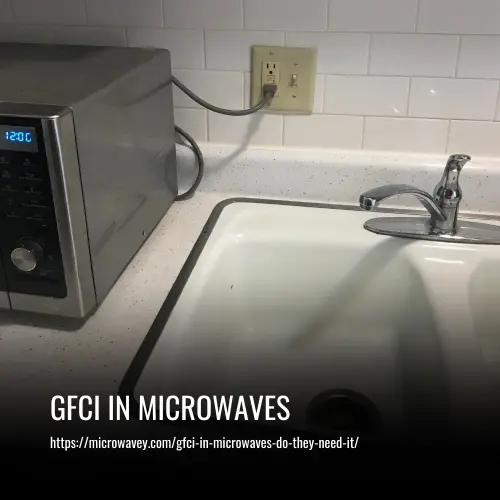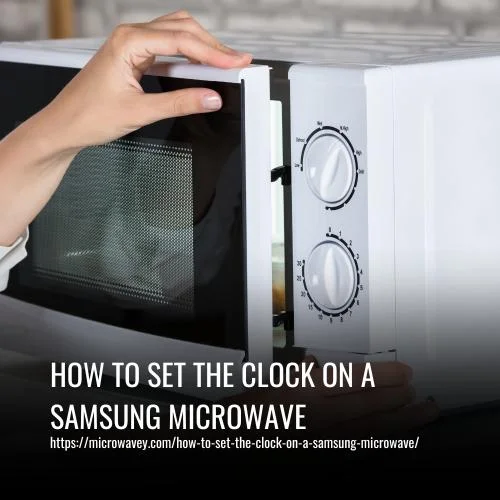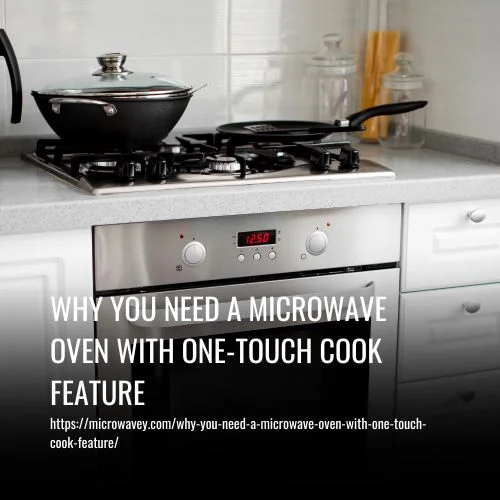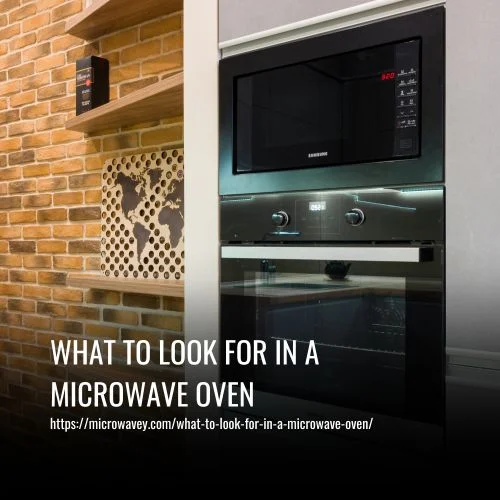How Hot Does A Microwave Get?
Microwaves typically heat food to temperatures between 100-200 degrees Fahrenheit, depending on the settings and duration of cooking. The microwave itself can reach temperatures of up to 500 degrees Fahrenheit during operation.
Microwave ovens get hot after being run for many minutes. Microwave ovens heat food directly, instead of heating up the air. Microwaves heat food faster and differently than normal ovens. Therefore, converting conventional oven recipe times to microwave ones requires careful consideration.
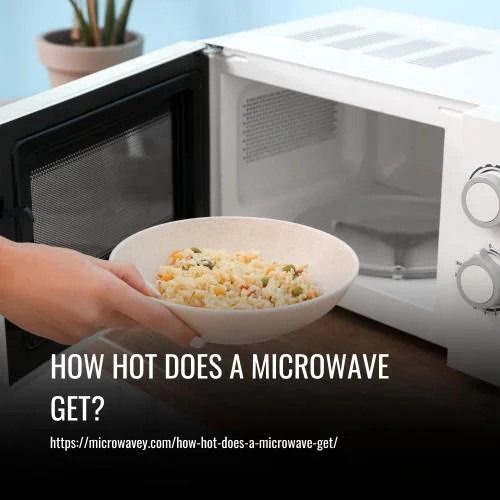
How To Convert Oven Times To Microwave Times
We recommend against this because microwaves heat food differently and faster. For instance, think about how microwaves get the edges of food very hot before they cook the center.
While this is the same as conventional cooking in an oven, if you continue this process, the exterior or edges of your food will sizzle and boil before the middle of it is cooked.
This is why it’s important to stir food cooked in microwaves ever so often whereas this is rarely called for in convection ovens.
Microwaves work differently than ovens
It’s understandable to want to compare the heating times of an oven versus a microwave oven. But it’s important to take a minute to understand that the way microwaves heat things is very different than how normal convection ovens heat stuff.
Convection ovens heat stuff by warming up the air and circulating it around your food. After a while, your food heats up thoroughly and your food is done. Microwave ovens, by contrast, emit microwaves into the oven. These waves cause the molecules (which are water in our food) to start circling around one another.
When they have done this for long enough, they heat up. And your food consequently heats up. So these are two very different approaches.
The highest temperature a microwave can reach
Some websites say that the highest temperature a microwave can reach is 212ºF or 100ºC. This is NOT TRUE. 212ºF is the temperature at which water boils. It’s also the temperature at which your food will begin to splatter all over your microwave.
Meaning when your food reaches this temperature, it will essentially be boiling itself, or at least the water molecules inside of it will be. Remember, almost all food has some water. Even very dry-feeling things have some water.
Microwaves will eventually damage and melt themselves. Eventually, all of the molecules that microwaves are passing through will get hot. You can begin to experience this yourself by running your microwave for more than five minutes or so.
WARNING: do not do this with an empty microwave or you may damage your microwave, or WORSE. You can place a large, microwave-safe measuring cup in your microwave full of water (like four cups or more) to test and see this for yourself. After a few minutes, when you stop the microwave and open the door, you will feel that everything inside the microwave is warm. Even the microwave itself is warm. This is because the molecules of the microwave itself began to heat up with the microwave energy that was passing through it.
Proving that the hottest temperature is hotter than 212ºF
There’s a really easy way to test if the hottest temperature a microwave can reach is hotter than 212ºF/100ºC.
We can do this by simply microwaving something that requires a much hotter temperature to melt than 212ºF. For instance, did you know that you can melt glass and metal inside a microwave oven?
Check out this video where the guy melts the glass and his microwave-safe beaker:
You can even catch paper towels on fire, which most people think cannot happen.
What is the temperature of a microwave on high?
You probably googled this because you are trying to convert a recipe that is for a normal convection oven to a microwave recipe.
And I’m here to tell you that while there are some general guidelines to how to convert oven time for microwave time, it is really not that simple.
How do I check the temperature of my microwave?
You don’t check the temperature of your microwave. The best you can do is to use a conversion chart that is accurate.
How hot is my microwave?
Some websites say that microwaves are 212ºF or 100ºC. This is not really true and is a vast misconception about microwaves.
Others say other things about how hot microwaves are, that aren’t really true. I’m not going to repeat the falsehoods here, lest Google picks them up and show them to visitors.
Actually, I will repeat something that is false, but only to go through a sort of thought experiment that will hopefully lead us to the truth about microwaves.
First, a website says that “at 800 watts your microwave will cook at 400 degrees”.
Let’s think about this for a minute.
We all know that if you microwave something it cooks pretty quickly. Like if you stick let’s say bacon in the microwave, it cooks in about 6-7 minutes for a normal (for America) 1,000 watt microwave.
And cooking bacon in a pan takes less time.
But then let’s look at oven recipes for bacon. A typical oven bacon recipe says to cook bacon at 400ºF (204ºC) for 18-20 minutes.
Hmm, there’s a discrepancy here. It takes 8-10 minutes to cook bacon in an 800-watt microwave, but it takes 18-20 minutes to cook bacon in a 400ºF oven.
That’s weird because these websites say that you can just simply convert the wattage to a temperature.
And I’m here to tell you that life is not that simple, no matter how much we want it to be.
Each recipe really needs to be tailored to the cooking devices that are being used. So if a recipe doesn’t call for using a microwave, you may get very different results using a microwave oven than a normal convection oven.
This is because microwaves do not heat the same way as normal ovens!
If they did, we wouldn’t have both! We would just have one or the other.
Microwave ovens and conventional ovens each have their own place in our kitchens, and it’s important to understand when one will work best for our recipe and the time available to cook.
FAQs
A microwave can reach temperatures of about 212 degrees Fahrenheit in just 1 minute of heating time.
How hot a microwave will get; or rather how hot food will get in 2 minutes depends on a few factors. One, how many watts is your microwave? If it is more than 1,000 watts, your microwave may be capable of boiling a cup of water in this period of time.
But as we explain in the rest of this article, microwaves themselves do not heat up. They use microwaves to cause the water molecules in your food to move around and rub against one another.
Microwaves can heat food very quickly, reaching temperatures of up to 212 degrees Fahrenheit (100 degrees Celsius) or higher within just a few seconds.
As I explained above, microwaves themselves don’t heat up much at all, until they have been on for at least a few minutes. So after only 30 seconds, a microwave will not really be warm at all. However, the food inside a microwave may have heated up. In fact,
I microwave frozen ice cream for 10 seconds or so to make it melt (our taste buds can’t taste very hot or very cold things, so doing this increases the flavor). You can test how hot stuff gets in 30 seconds by microwaving say a cup of water in a coffee mug. We know that it is safe to do this and that the water will not boil in that short of time nor the coffee mug will melt.
Conclusion:
So, next time you’re anxiously waiting for your food to heat up in the microwave, just remember that it can reach temperatures as high as 212 degrees Fahrenheit. While it may not be hot enough to cook a steak, it’s hot enough to warm up that leftover pizza. Just be sure to use caution and follow safety guidelines to avoid any mishaps. Stay safe and enjoy your quick and convenient meals!

